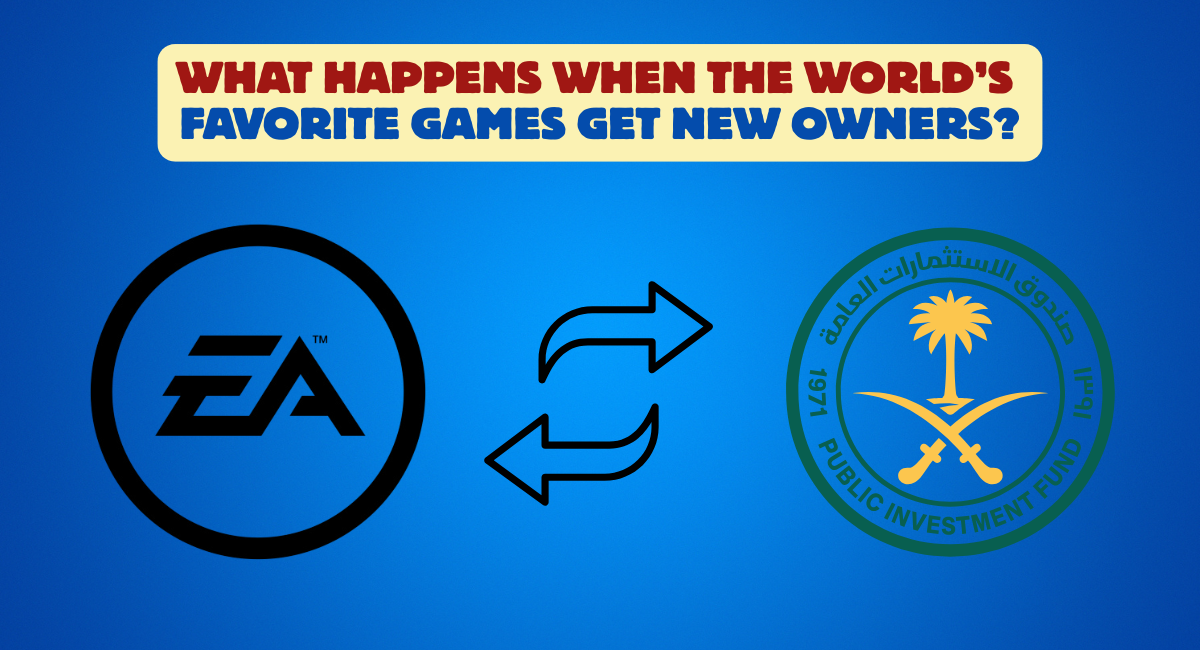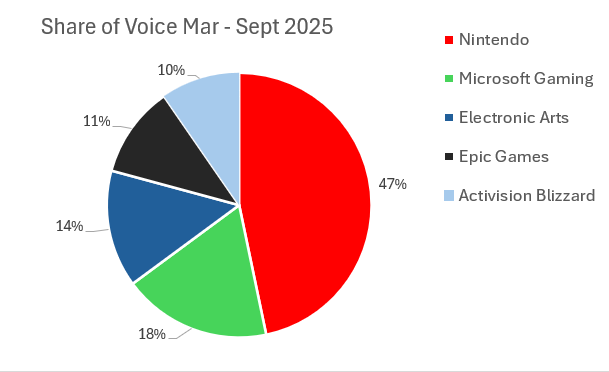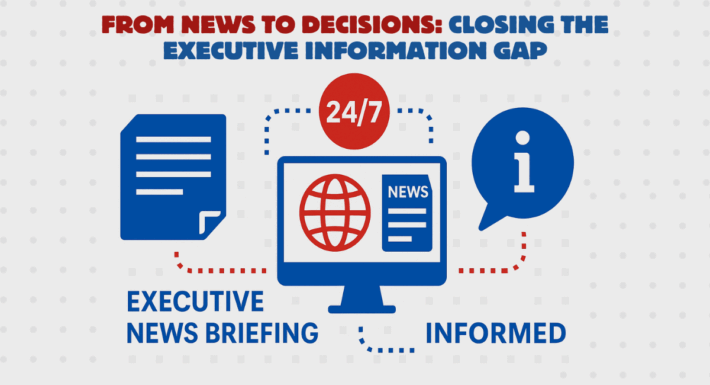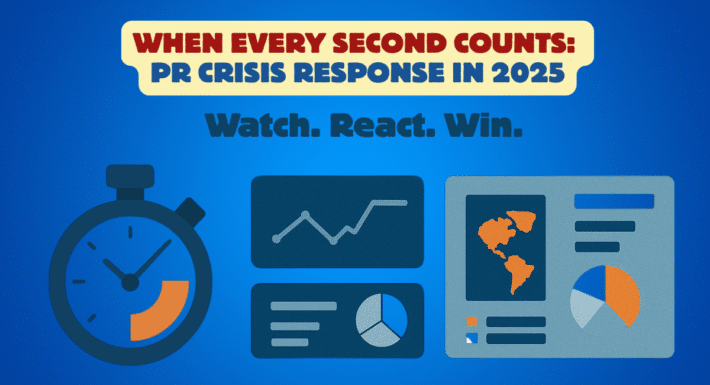EA Games & PIF: When a $55 Billion Buyout Becomes a Brand Protection Challenge

Ask your elder-millennial aunt about video games. She’ll mention The Sims. Corner any 15-to-35-year-old guy about his favorite NHL, FIFA, or Madden edition, and watch him light up like a console booting up. EA doesn’t just make games. They manufacture nostalgia.
Electronic Arts has agreed to a sale worth $55 billion, with Saudi Arabia’s Public Investment Fund (PIF), Jared Kushner’s Affinity Partners, and private equity firm Silver Lake at the helm. As someone who has spent years analyzing crisis scenarios across industries, I see this acquisition as a masterclass waiting to unfold. Crisis or case-study, we’re here waiting to find out.
The Gaming Giant’s Cultural Footprint
My analysis of share of voice data reveals something counterintuitive: Despite this massive buyout, EA isn’t even the loudest voice in gaming. Nintendo commands that throne. Sony follows close behind. But EA? They’ve carved out something different, a cross-generational loyalty that transcends market share metrics.
I recently replayed Command and Conquer. My son discovered Need for Speed: Hot Pursuit. Two generations, same publisher, different decades. That’s institutional permanence that few brands achieve. Dead Space, Medal of Honor, and Battlefield each represents an innovation that shaped gaming’s evolution. With Battlefield 6 on the horizon and annual sports titles guaranteed to generate revenue, EA’s pipeline appears robust if it can retain its audience.
Data Privacy Meets Geopolitical Reality
Here’s where my threat detection instincts kick in. We’ve spent years debating the data privacy implications of TikTok. EA software runs on billions of devices globally. Your computer, console, and phone, too.
Freedom House scores Saudi Arabia 9 out of 100 on freedom metrics. That number should make any PR professional pause. When Plants vs Zombies potentially offers broader device access than TikTok, we’re operating in uncharted crisis management territory.
The ragebait crowd points to Silver Lake as a moderating influence. The Kushner connection might soften resistance in certain demographics, but that’s a double-edged sword.
Share of Voice Analysis: Reading the Room

The data tells a story beyond headlines. EA’s share of voice compared to competitors reveals vulnerability during transition periods. My analysis shows sentiment shifts happen fast when ownership changes hands. Monitoring these fluctuations requires more than automated alerts—you need human analysts who understand gaming culture’s unique dynamics.
EA’s North American sales contributed 41% of its revenue, which is a significant portion of the pie that could lead to reputational disruption, assuming there’s no backlash in the United States. That’s a big if.
The Tim Hortons Parallel: A Warning from Canada
Let me share a cautionary tale from north of the border. Tim Hortons ranked fifth in brand value before Restaurant Brands International acquired it in 2014. By 2018? Fiftieth place. Canadians didn’t abandon Timmies entirely; we just started seeing other coffee shops.
The parallel to EA is striking. Both brands held institutional status in their home markets. Both represented more than products; they embodied cultural identity.
Yet Tim Hortons offers hope, too. Recent years saw brand value recover through hyperlocal engagement and aggressive Canadiana sponsorship. Translation for EA? Madden might be their maple syrup an IPso American that it could shield the broader portfolio from gaming nationalism.
Internal Disruption: The Silent Crisis
Having guided companies through major transitions, I know disruption begins before announcements. Whispers start in Slack channels. Productivity stutters. Key talent updates LinkedIn profiles. By the time press releases drop, cultural erosion is already underway.
EA employs thousands of developers, artists, and creative minds. These aren’t assembly line workers; they’re craftspeople whose passion directly impacts the quality of their products. Lose them, and you’re not just losing headcount. You’re losing the institutional knowledge that prevents Battlefield from becoming another generic shooter.
Crisis Prevention Strategies for Gaming’s New Reality
So how should EA’s communications team navigate this minefield? Based on similar transitions I’ve analyzed, here’s the playbook:
First, acknowledge the elephant immediately. Consumers aren’t naive. Address data privacy concerns head-on with concrete commitments, not corporate speak. Create an independent oversight board if necessary. Make transparency your competitive advantage.
Second, protect your talent pipeline. Nothing reassures audiences like seeing familiar creative leaders stay put. Every high-profile departure amplifies uncertainty. Lock down key personnel before lawyers finish paperwork.
Third, double down on product quality. The best crisis management is shipping amazing games. Battlefield 6 needs to exceed expectations. Annual sports titles must innovate, not iterate. Provide consumers with reasons to stay that extend beyond ownership concerns.
Fourth, leverage your American DNA strategically. Madden isn’t just a game—it’s a Thanksgiving tradition. FIFA connects global communities. These cultural touchpoints provide natural insulation against nationalist backlash if positioned correctly.
Measuring Success in Uncharted Territory
Traditional metrics won’t capture the complexity of this transition. Share of voice matters less than sentiment velocity. Player retention trumps new user acquisition. Community health indicators—such as forum activity, creator enthusiasm, and competitive scene vitality—become leading indicators of brand resilience.
This acquisition represents more than financial engineering. It’s a test case for whether beloved cultural institutions can survive changes in geopolitical ownership. EA’s games shaped generations. Now those generations will decide if nationality matters more than nostalgia.
The optimistic read? Gaming transcends borders better than most industries. Players care about frame rates, not fund ownership. Ship great games, respect your community, and ownership becomes a footnote.
The realistic read? This transition will test every crisis management principle we know. Success requires threading needles between competing stakeholder interests while maintaining creative excellence. Few brands manage that balance. Even fewer survive the attempt intact.
For PR professionals watching this unfold, EA’s journey offers real-time education in modern crisis management. The playbook is being written as we watch. Whether it becomes required reading or a cautionary footnote depends on decisions being made right now in boardrooms and dev studios.
One thing’s certain: The game has changed. The question is whether EA can still win playing by new rules.
Frequently Asked Questions
How do you measure brand protection effectiveness during a major acquisition?
What's the difference between share of voice and share of sentiment in crisis scenarios?
How quickly should companies address data privacy concerns after geopolitical acquisitions?
Can beloved brands survive changes in geopolitical ownership?
What are the warning signs that an acquisition is damaging internal culture?
How do you prevent employee exodus during ownership transitions?
What role does nationalism play in gaming industry acquisitions?
How do you build a crisis monitoring system for complex acquisitions?

James Rubec
James Rubec serves as Vice President of Products at Fullintel, where he specializes in crisis response and AI-driven threat detection. His work analyzing geopolitical risks and brand protection scenarios has been featured in the Crisis Response Journal, and he has spent years helping organizations navigate high-stakes transitions where data privacy and cultural sentiment intersect. He combines technical expertise in media intelligence with a gamer’s understanding of how entertainment brands build—and risk losing—generational loyalty.
- Brand protection
- Creative talent retention acquisitions
- crisis management
- Data privacy concerns
- EA Games brand protection
- Electronic Arts
- Gaming industry acquisition
- Gaming industry crisis management
- Geopolitical risk
- Public Investment Fund
- Saudi Arabia gaming acquisition
- Share of voice analysis
- Silver Lake
- Tim Hortons
James Rubec is the VP of Product Development at Fullintel, where he leads the development of cutting-edge media monitoring and analysis tools tailored for PR and communications professionals. With a deep background in media intelligence, analytics, and AI-driven insights, James specializes in transforming vast amounts of media data into actionable intelligence for Fortune 500 companies, government organizations, and top-tier agencies. His expertise spans media measurement, sentiment analysis, and the strategic application of AI to enhance PR decision-making. Under his leadership, Fullintel has pioneered innovations in AI-powered media monitoring, crisis detection, and competitive benchmarking, ensuring clients stay ahead in an increasingly complex media landscape.




